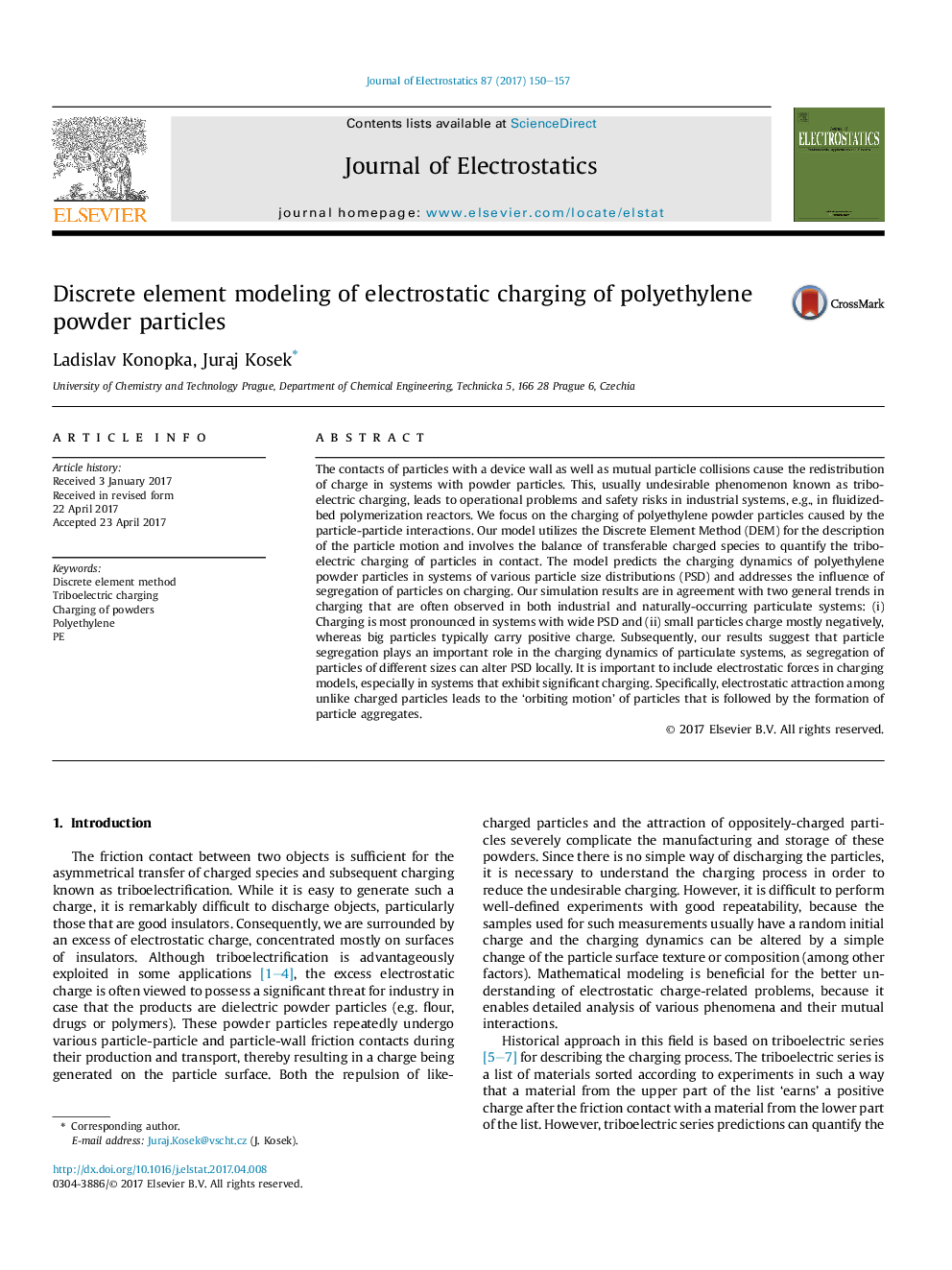| کد مقاله | کد نشریه | سال انتشار | مقاله انگلیسی | نسخه تمام متن |
|---|---|---|---|---|
| 5005741 | 1461313 | 2017 | 8 صفحه PDF | دانلود رایگان |
عنوان انگلیسی مقاله ISI
Discrete element modeling of electrostatic charging of polyethylene powder particles
ترجمه فارسی عنوان
مدل سازی عنصر گسسته شارژ الکترواستاتیک ذرات پودر پلی اتیلن
دانلود مقاله + سفارش ترجمه
دانلود مقاله ISI انگلیسی
رایگان برای ایرانیان
کلمات کلیدی
روش عنصر گسسته، شارژ سه بعدی الکتریکی، شارژ پودر، پلی اتیلن، پلی اتیلن،
موضوعات مرتبط
مهندسی و علوم پایه
سایر رشته های مهندسی
مهندسی برق و الکترونیک
چکیده انگلیسی
The contacts of particles with a device wall as well as mutual particle collisions cause the redistribution of charge in systems with powder particles. This, usually undesirable phenomenon known as triboelectric charging, leads to operational problems and safety risks in industrial systems, e.g., in fluidized-bed polymerization reactors. We focus on the charging of polyethylene powder particles caused by the particle-particle interactions. Our model utilizes the Discrete Element Method (DEM) for the description of the particle motion and involves the balance of transferable charged species to quantify the triboelectric charging of particles in contact. The model predicts the charging dynamics of polyethylene powder particles in systems of various particle size distributions (PSD) and addresses the influence of segregation of particles on charging. Our simulation results are in agreement with two general trends in charging that are often observed in both industrial and naturally-occurring particulate systems: (i) Charging is most pronounced in systems with wide PSD and (ii) small particles charge mostly negatively, whereas big particles typically carry positive charge. Subsequently, our results suggest that particle segregation plays an important role in the charging dynamics of particulate systems, as segregation of particles of different sizes can alter PSD locally. It is important to include electrostatic forces in charging models, especially in systems that exhibit significant charging. Specifically, electrostatic attraction among unlike charged particles leads to the 'orbiting motion' of particles that is followed by the formation of particle aggregates.
ناشر
Database: Elsevier - ScienceDirect (ساینس دایرکت)
Journal: Journal of Electrostatics - Volume 87, June 2017, Pages 150-157
Journal: Journal of Electrostatics - Volume 87, June 2017, Pages 150-157
نویسندگان
Ladislav Konopka, Juraj Kosek,
